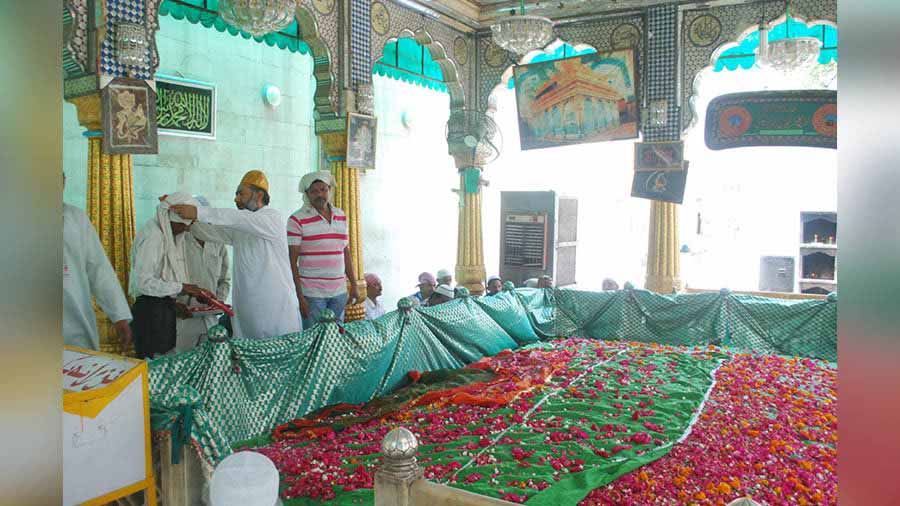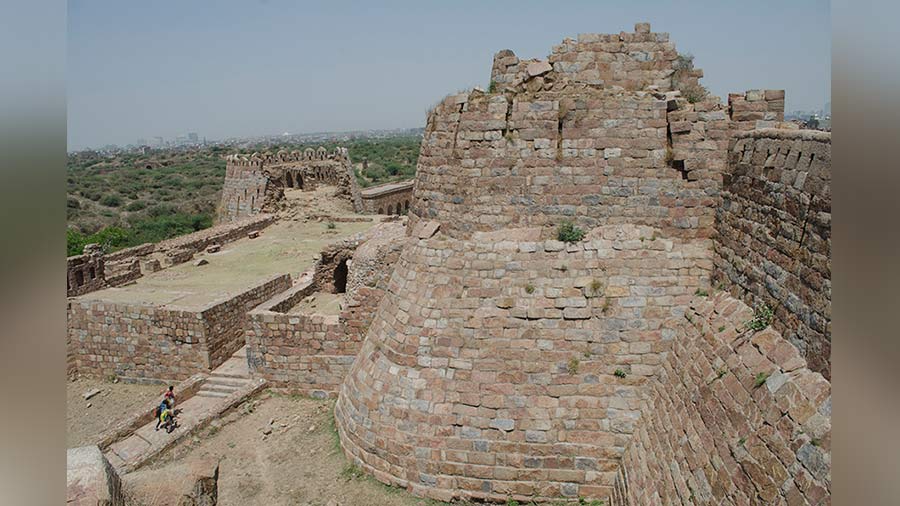The construction of Qutub Minar was started by Qutb ud-Din Aibak in 1199 and completed in 1220 by his successor Iltutmis, but the tower was not named after Qutb ud-din Aibak, but a Sufi saint — Qutbuddin Bakhtiyar Kaki — who was the spiritual guru of Iltutmish. Bakhtiyar Kaki was a Muslim Sufi mystic, saint and scholar of the Chishti order. He was born in Osh, in Fergana Valley (present day Kyrgyzstan), in 1173.
Bakhtiyar Kaki arrived in Delhi during the reign of Iltutmish and soon became a favourite of the emperor. He settled in the present day Mehrauli area of Delhi and Iltutmis built a step well near his residence so that he can get a steady supply of water. Known as Gandhak ki Baoli, the step well stands to this day, as does the dargah of Bakhtiyar Kaki.

The dome pavilion over the grave of Qutbuddin Bakhtiyar Kaki
When it comes to dargahs of Delhi, the first name that pops up is the Dargha of Nizamuddin Auliya, after whom an entire neighborhood of Delhi is named. Bakhtiyar Kaki was the spiritual instructor of Nizamuddin but the guru’s dargah has always remained in the shadow of his more famed disciple. But the shrine of Bakhtiyar Kaki remains a favourite among locals and every day hundreds of people pay homage to the Sufi mystic, irrespective of religion
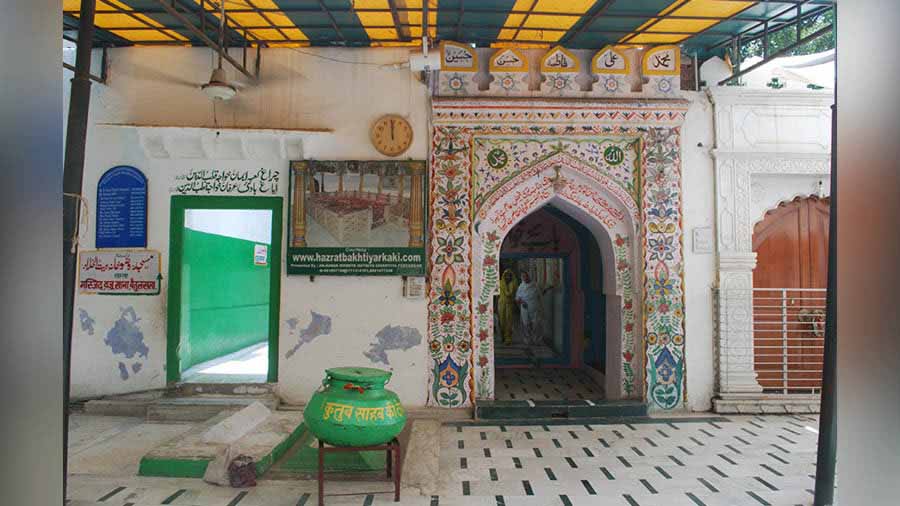
The entrance of the dargah of Qutbuddin Bakhtiyar Kaki
No wonder the mystic had his share of miracles and the century old stories are still alive. The word kaki originates from kak, a type of bread. Legend says that Bhaktiyar Kaki never accepted any donation from his followers, leading to extreme poverty and hunger. This forced Bhaktiyar Kaki’s wife to beg for leftover bread from the local baker. The baker’s wife provided the bread, but in return humiliated her. Bakhtiyar Kaki, on hearing this forbade, her wife to beg for food and instead told her to collect the bread from his prayer alcove. Miraculously, every day, the prayer alcove was full of kaks or breads.
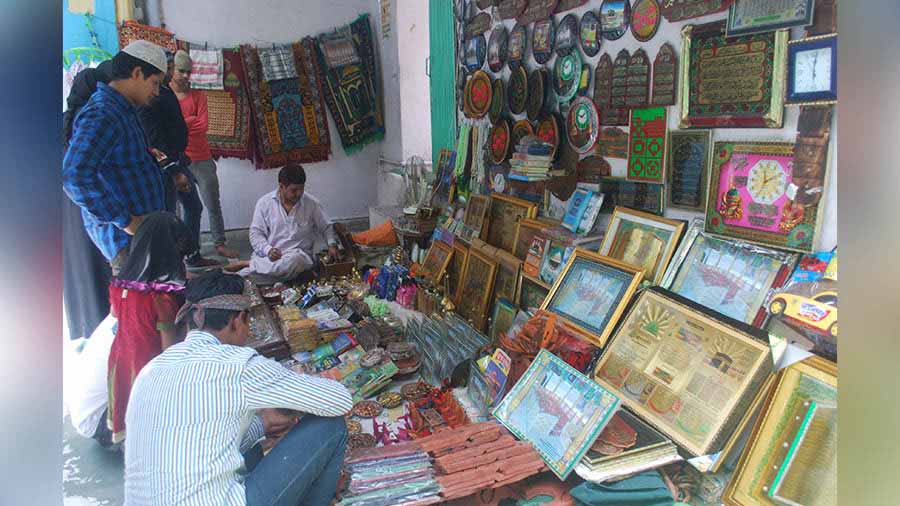
Shops selling items at the entrance of the dargah
Today, the dargah is located deep inside the labyrinth of the Mehrauli, a southern neighbourhood of Delhi. A complex maze of lanes and bylanes leads to the shrine. The best way to reach the place is to ask the locals and it works much better than google maps. The interior is no less a maze with an intricate network of passages passing through several decorative arched gateways.
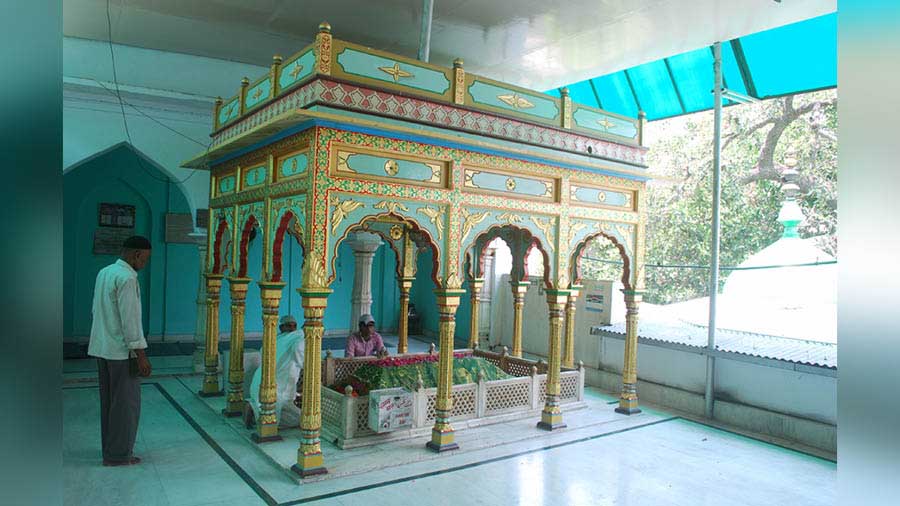
Another grave topped with a colourful ornate pavilion
The complex is centred around the grave of Bakhtiyar Kaki and the complex houses several graves as it is believed that a burial in the vicinity can provide a shortcut to heaven. Over the years, the simple shrine of the mystic Sufi saint has been modified to a brightly coloured ornate pavilion crowned with a dome. Today, the grave attracts a lot of believers who pay their respect by spreading the sacred cloth above the grave. Shops at the entrance of the dargah sell these colorful pieces of cloth along with other objects of ritual.

An arched gateway with intricate mosaic layout
The dargah covers a huge area consisting of graves, mosques, minars and several other structures scattered in the most unusual and unexpected manner. There are also several halls, which include Naubat Khana (Drum House), Majlis Khana (Assembly hall) and Tosh Khana (Robe Chamber). Next to the dargah complex is the Moti Masjid, housed inside the complex of Zafar Mahal. It is named after the last Mughal ruler Bahadur Shah Zafar and happens to be the last major Mughal-built structure of the sub-continent.
